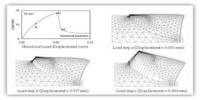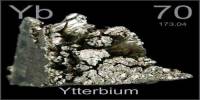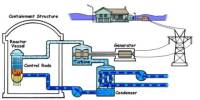Topological control capabilities in an integrated acoustic-electronic system at technologically relevant frequencies are described in a new study published in Nature Electronics. This finding paves the path for more topological research in systems that utilize high-frequency sound waves, with applications in 5G communications and quantum information processing.
Qicheng (Scott) Zhang, a postdoc in Charlie Johnson’s lab at the University of Pennsylvania, spearheaded the research, which was carried out in partnership with Bo Zhen’s group and colleagues from Beijing University of Posts and Telecommunications and the University of Texas in Austin.
This study is based on ideas from the subject of topological materials, which was pioneered by Penn’s Charlie Kane and Eugene Mele. A topological insulator is an example of this type of material, which works as an electrical insulator on the inside yet conducts electricity on the surface.
Topological events are thought to occur in a wide range of materials, including some that do not employ electricity and instead rely on light or sound waves. Zhang was interested in topological phononic crystals, which are metamaterials that utilize acoustic waves, or phonons, for this research.
Topological features are known to exist in these crystals at low frequencies in the megahertz range, but Zhang wanted to explore if topological events might also arise at higher frequencies in the gigahertz region, which are important for telecommunication applications like 5G.
The researchers used cutting-edge approaches and skills from theory, simulation, nanofabrication, and experimental measurements to investigate this complicated system.
To begin, researchers at the Zhen lab used simulations to find the optimum types of devices to construct. They are experts in analyzing topological aspects in light waves.
This work brings the concept of topology to gigahertz acoustic waves. We demonstrated that we can have these interesting physics at a useful range, and now we can build up the platform for more interesting research to come.
Qicheng (Scott) Zhang
The researchers next etched nanoscale circuits onto aluminum nitride membranes using high-precision techniques at Penn’s Singh Center for Nanotechnology, based on the modeling results.
These devices were subsequently sent to Keji Lai’s lab at UT Austin for microwave impedance microscopy, a technique for capturing high-resolution photographs of acoustic waves at extremely small scales. Lai’s method employs a commercial atomic force microscope that has been modified and enhanced using electronics produced by his lab.
“Before this, if people want to see what’s going on in these materials, they usually need to go to a national lab and use X-rays,” Lai says. “It’s very tedious, time-consuming, and expensive. But in my lab, it’s just a tabletop setup, and we measure a sample in about 10 minutes, and the sensitivity and resolution are better than before.”
The experimental evidence that topological phenomena do occur at higher frequency ranges is the study’s main discovery.
“This work brings the concept of topology to gigahertz acoustic waves,” says Zhang. “We demonstrated that we can have these interesting physics at a useful range, and now we can build up the platform for more interesting research to come.”
Another significant finding is that these qualities can be integrated into the device’s atomic structure, allowing different parts of the material to propagate signals in different ways, which was anticipated by theorists but “amazing” to witness practically, according to Johnson.
“That also has its own important implications: When you’re conveying a wave along a sharp trail in ordinary systems that don’t have these topological effects, at every sharp turn you’re going to lose something, like power, but in this system you don’t,” he says.
Overall, the researchers believe that this finding represents a key starting point for both fundamental physics research and the development of novel gadgets and technologies.
The researchers plan to alter their gadget in the near future to make it more user-friendly and to improve its performance at higher frequencies, particularly those utilized in applications like quantum information processing.
“In terms of technological implications, this is something that could make its way into the toolbox for 5G or beyond,” says Johnson.
“The basic technology we’re working on is already in your phone, so the question with topological vibrations is whether we can come up with a way to do something useful at these higher frequency ranges that are characteristic of 5G.”
















